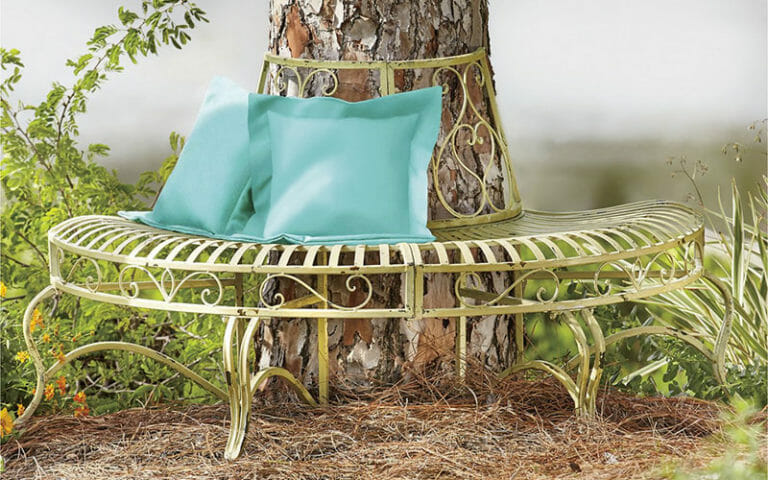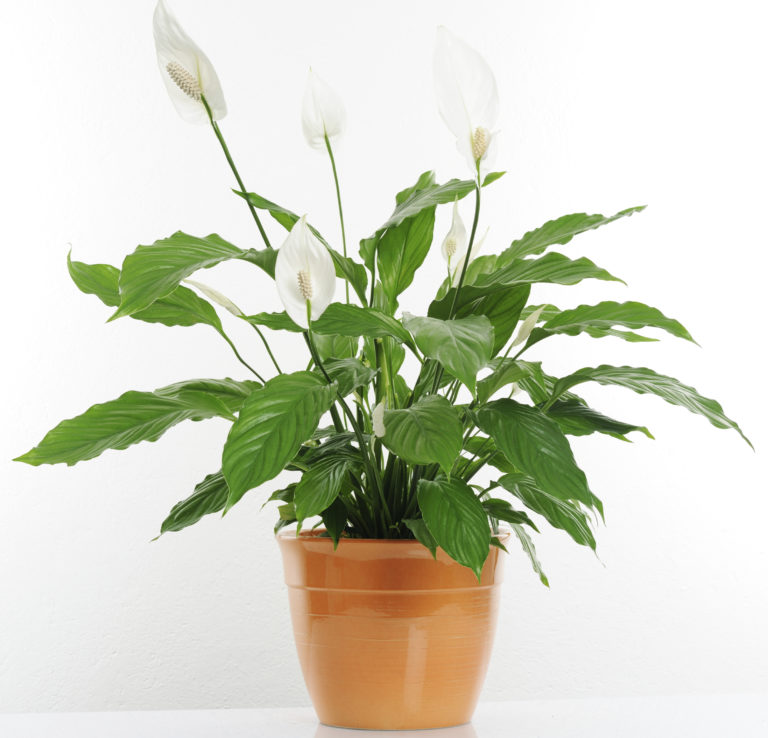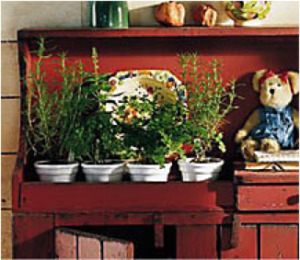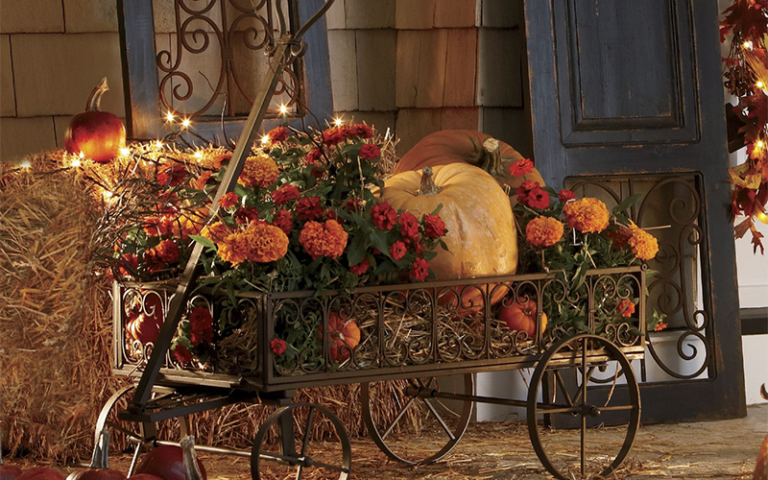Gardening Tips to Grow On
Kitchen Herb Garden
Everyone can heartily agree that a garden is good for the soul and good for your dinner plate too! Especially when you indulge in an herb garden whether it’s of the window-sill variety or one that fills your backyard garden. It’s wonderful to snip fresh herbs straight from the plants to put in your recipes while you cook. In addition to herb garden inspirations, we offer up a few ideas on how to add a decorative touch to your garden and what makes a potting soil perfect.
If you love cooking with fresh-from-the-garden herbs, here are tips for planting and growing your favorite culinary herbs.
Basil is an annual and is very sensitive to cold air, so if planted outside, make sure to protect it when temps dip. With more than 40 varieties available, the most popular includes: sweet basil, cinnamon basil, purple basil and lemon basil. To choose the best variety to plant, first to determine how you will use the basil: as part of your landscape, as an ingredient in recipes, as a garnish or to make pesto.
Oregano is a perennial and prefers dry climate. Plant it in full sun for strong flavor. As a bonus, it can repel bugs and rabbits from your garden too. It has a zesty flavor and can be used fresh or dried.
Sage is a hardy perennial and comes in many exciting varieties, like pineapple sage and honeydew melon sage. Sage is best when fresh, but can be stored frozen or dried. For a bit of color in your garden, consider planting tricolor sage.
Rosemary is a slow growing perennial evergreen shrub that can handle just about any climate. Both the leaves and the flowers are edible. It is perfect for a rock garden or in the garden near beans, cabbage, carrots or sage. Prune the stems to use it fresh or dry it for later use.
Thyme is a small perennial shrub that prefers dry climate. There are over fifty varieties and some can survive the cold winter. The most common variety is English thyme. Lemon thyme has a hint of lemon and caraway thyme has a lovely fragrance of thyme and caraway. Leaves can be used fresh, frozen or dried.
Mint is a perennial and it can spread quickly and take over a garden. You may want to consider growing it in a planter. Mint comes in many exciting varieties such as peppermint, spearmint, lavender mint and banana mint. When cooking, mint can be used in both sweet and savory dishes.
Lavender prefers a dry climate and some varieties can survive the cold winter. It is hardy and drought tolerant and its scent can keep insects and rabbits at bay.
Cilantro is fast growing and prefers the cooler climates in spring and fall. Plants will bolt in the summer heat. Slow-Costa Rica, Leisure and Long Standing are slow-bolting varieties and are the best choices to grow if you want to harvest the leaves. Its leaves are called cilantro and the seeds are called coriander.
Dill is an annual self- seeding plant that doesn’t like to be transplanted, so start the seeds in your garden in early summer. To ensure a fresh supply of dill all summer, continue sowing seeds every two weeks. Do not allow the plants to flower if you want an extended harvest.
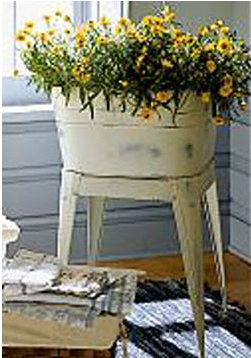
Washtub Planter
Turn any vintage washtub or bucket into a charming rustic planter. It’s an easy way to add a whimsical touch to your home and allows you to change up its contents based on the season.
- Invert terra cotta pots to make display tiers inside the tub/bucket.
- Arrange silken or dry flowers into several different bouquets. Remember the vases won’t be seen so they don’t need to be fancy. Canning jars or tin cans work nicely.
- Choose foliage and blooms that pick up the colors of your decor.
- Try a seasonal touch. Use bittersweet and colored leaves for the fall harvest, and Poinsettia plants and holly at Christmas.
Do you want to learn more about Container Gardening Basics?
Perfect Potting Soil
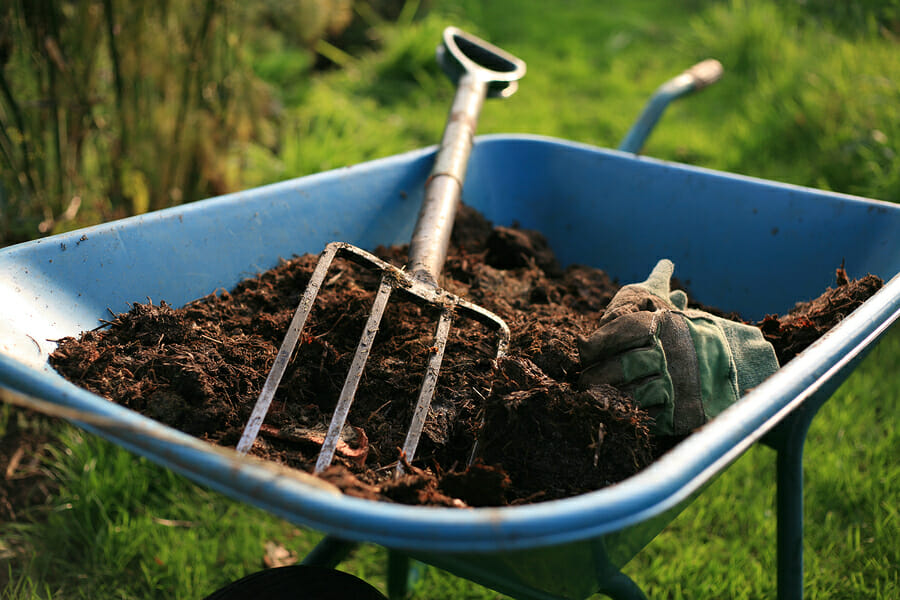
The best kind of soil mixes sand, silt, organic matter and clay. Sand provides drainage; silt and organic matter provide needed chemicals. Clay acts as the glue that holds it together. Organic matter (stuff that was once alive) adds the microscopic organisms that help plants absorb nutrients. For excellent long-term growth for your potted plants, mix 1/3 potting soil, 2/3 garden loam (a combination of different kinds of soil) and 4 handfuls of dried manure.
Ready to put all those herbs to good use in the kitchen?
Add fresh herbs to your favorite recipes and share with your family and friends.

